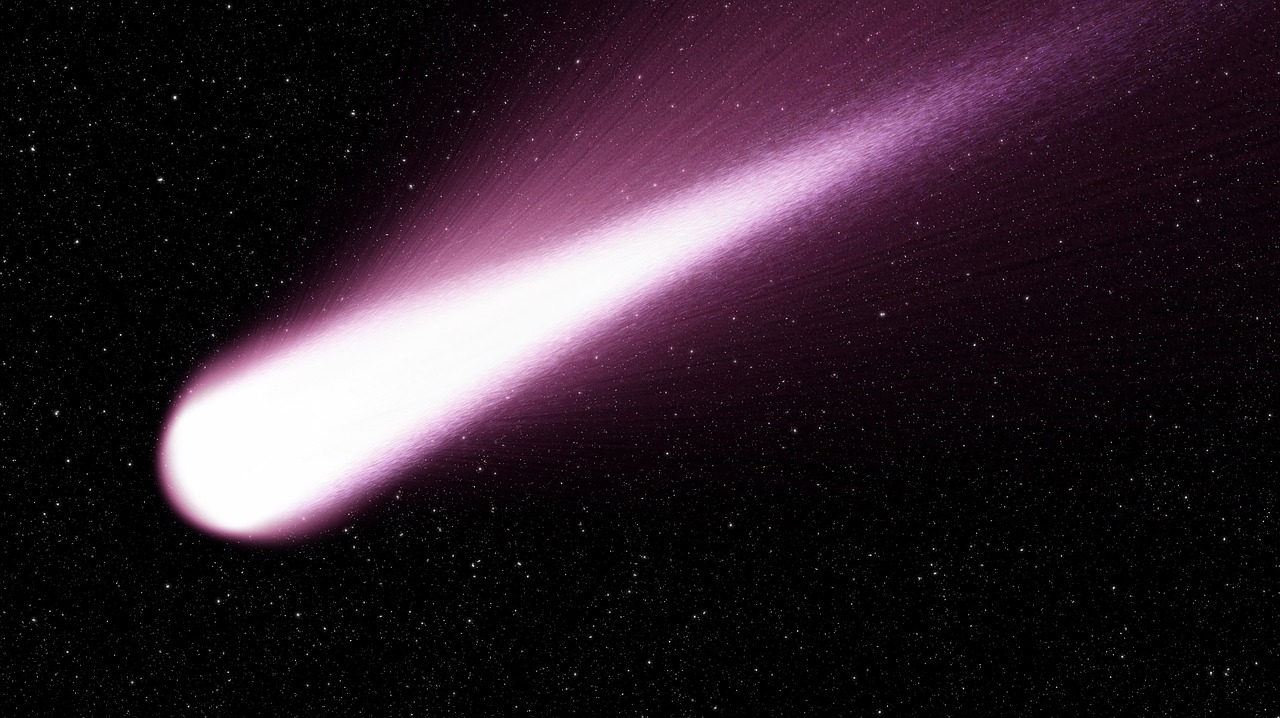
A comet is a star that has a low-density nucleus and a luminous atmosphere known as a hair.
Comet is a star that, generally, is composed of a low-density nucleus and a luminous atmosphere (that is, the "hair") that precedes, surrounds or accompanies it according to its location in relation to the Sun. The notion finds its origin in the Latin word comēta which, in turn, derives from a Greek term that translates into Spanish precisely as "hair" .
These celestial bodies, which are made up of ice and rocks , usually move in elliptical orbits of great eccentricity. Due to their composition, comets sublimate when they are close to the Sun.
Different parts can be recognized in and around a comet:
- Comet nucleus : It is its central structure, characterized by solidity.
- Comet tail : Formed by gas and the dust it drags.
- Coma (astronomy) : In the astronomical context, the atmosphere that the gas and dust form around the comet is called a coma.
- Arc shock : Arises from the ionization of the gases found in the coma.
Study of comets
After the telescope was invented, astronomy experts were able to determine that comets appear periodically in space . The first scientist to notice this was the Englishman Edmund Halley , who in 1705 was able to anticipate that the comet that would bear his name ( Halley's Comet ) would appear in 1758 .
In addition to Halley (comet) , there are other stars of this type that are also very important, such as the case of comet Hale-Bopp , which was discovered in 1995 and is characterized by being one of the brightest that has been seen in many decades. .
Likewise, we must not forget Comet Humason , a celestial body named after the person who discovered it on the first day of September 1961 . Its main hallmark and what really gives it worldwide relevance is its giant size.
It should be noted that the Hubble Space Telescope and the International Space Station contributed to detecting and studying various comets, as did missions promoted by NASA and the European Space Agency .
Spectroscopy , astronomical photography , radio telescopes and satellites , meanwhile, are among the devices and techniques that allow us to obtain knowledge about comets.
Related concepts
Sometimes, the concept of a comet is confused with other similar ones. At this point it is important to indicate that a meteoroid is the group of rock and dust particles that are found in space due to the passage of a comet or even the remains from the emergence of the universe and the Solar System .
A comet, therefore, can produce a meteoroid. When the meteoroid passes through the Earth's atmosphere, the luminous phenomenon known as a meteor is generated. Shooting meteors are often referred to as shooting stars . If the meteoroid does not disintegrate in the atmosphere and reaches the Earth's surface, it is called a meteorite .
Celestial bodies that are larger than a meteoroid but smaller than a dwarf planet, on the other hand, are called asteroids .

Comets can sometimes be seen in the night sky.
Types of kites
According to the characteristics that can be seen from observatories , a comet can be classified as barbate (the luminous atmosphere precedes the nucleus), crinite (its hair is divided into several branches), corniform (its tail is curved) or caudate (the luminous atmosphere goes after the nucleus).
However, we can establish that there are two other classes of comet classifications. One of them is the one that is done based on the size of the diameter in kilometers. In this way we find the goliaths , which are those that are more than 50 kilometers in diameter; the giants who are between 10 and 50; the large ones that have a size between 6 to 10; the medium ones that have between 3 to 6; the small ones that enjoy between 1.5 and 3 kilometers; and finally the aquinas , which have a maximum of 1.5 kilometers.
The second classification is the one that differentiates them based on their cometary age . Thus, we find the baby comets that are less than 4 years old, the young ones that do not exceed 30, the average ones that are less than 70 years old, the old ones that are less than 100 years old and the methuselahs that are over 100 years old.
Consequences of impacts
Larger meteorites can cause great damage when hitting planets. This cosmic impact is capable of producing an immense crater and even generating the mass extinction of species .
In fact, dinosaurs are believed to have become extinct about 66 million years ago due to the fall of a gigantic comet to Earth . One theory indicates that the Chicxulub impact , in the Yucatan Peninsula ( Mexico ), is associated with this fact.

The kite or kite is also known as a comet.
Kite as a game
On the other hand, a comet (also known, in this sense, as a kite , kite , kite or pandorga , among other names) gives its name to the flying device that gains height and takes flight due to the action of the wind and that can be directed from the ground. through one or more threads.
The kite is one of the most traditional entertainments for children, although there are also kite competitions where adults participate.
Finally, it should be noted that Comet is a card game where the nine of pentacles is the wild card.
